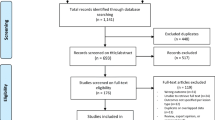Abstract
Although the application of Q-switched lasers on nevus of Ota (OTA) is well demonstrated, debates about clinical option between Q-switched alexandrite laser (QSA) and Q-switched Nd:YAG laser (QSNY) still remain. This systematic review and meta-analysis estimated the overall successful rate of OTA pigment clearance and complication rate of QSA and QSNY and evaluated which laser could produce a better result. English articles evaluating pigment clearance and complications of QSA and/or QSNY on OTA were screened through predetermined inclusion and exclusion criteria and analyzed. The successful rate of pigment clearance and complication rate of QSA and QSNY were respectively calculated using a random-effects or fixed-effects model, depending on the heterogeneity of the included studies. The successful rate and complication rate of QSA and QSNY were compared statistically. Of the 140 articles searched, 13 met inclusion criteria. Totally, 2153 OTA patients treated by QSA and 316 patients treated by QSNY were analyzed. In QSA and QSNY groups, respectively, the successful rate of OTA pigment clearance was 48.3 % (95 % confidence interval (CI) 19.9–76.8 %) and 41 % (95 % CI 9.7–72.2 %), while the complication rate was 8.0 % (95 % CI 3.9–12.2 %) and 13.4 % (95 % CI 7.7–19.0 %). When compared with QSNY, QSA had a significantly higher successful rate (P = 0.017), and a lower complication rate (P = 0.000). According to this review, QSA may surpass QSNY in treatment for OTA as it had a superior successful rate of pigment clearance and a lower complication rate than QSNY did.





Similar content being viewed by others
References
Hata Y, Matsuka K, Ito O et al (1996) Treatment of nevus Ota: combined skin abrasion and carbon dioxide snow method. Plast Reconstr Surg 97:544–554
Hosaka Y, Onizuka T, Ichinose M et al (1995) Treatment of nevus Ota by liquid nitrogen cryotherapy. Plast Reconstr Surg 95:703–711
Taylor CR, Flotte TJ, Gange RW, Anderson RR (1994) Treatment of nevus of Ota by Q-switched ruby laser. J Am Acad Dermatol 30:743–751
Anderson RR, Parrish JA (1983) Selective photothermolysis: precise microsurgery by selective absorption of pulsed radiation. Science 220:524–527
Watanabe S, Takahashi H (1994) Treatment of nevus of Ota with the Q-switched ruby laser. N Engl J Med 331:1745–1750
Kono T, Nozaki M, Chan HH, Mikashima Y (2001) A retrospective study looking at the long-term complications of Q-switched ruby laser in the treatment of nevus of Ota. Lasers Surg Med 29:156–159
Seo HM, Choi CW, Kim WS (2015) Beneficial effects of early treatment of nevus of Ota with low-fluence 1,064-nm Q-switched Nd:YAG laser. Dermatol Surg 41:142–148
Kar HK, Gupta L (2011) 1064 nm Q switched Nd: YAG laser treatment of nevus of Ota: an Indian open label prospective study of 50 patients. Indian J Dermatol Venereol Leprol 77:565–570
Sethuraman G, Sharma VK, Sreenivas V (2013) Melanin index in assessing the treatment efficacy of 1064 nm Q switched Nd-Yag laser in nevus of Ota. J Cutan Aesthet Surg 6:189–193
Chang CJ, Kou CS (2011) Comparing the effectiveness of Q-switched Ruby laser treatment with that of Q-switched Nd:YAG laser for oculodermal melanosis (Nevus of Ota). J Plast Reconstr Aesthet Surg 64:339–345
Aurangabadkar S (2008) QYAG5 Q-switched Nd:YAG laser treatment of nevus of Ota: an Indian study of 50 patients. J Cutan Aesthet Surg 1:80–84
Chan HH, Leung RS, Ying SY et al (2000) A retrospective analysis of complications in the treatment of nevus of Ota with the Q-switched alexandrite and Q-switched Nd:YAG lasers. Dermatol Surg 26:1000–1006
Choi JE, Lee JB, Park KB et al (2014) A retrospective analysis of the clinical efficacies of Q-switched Alexandrite and Q-switched Nd:YAG lasers in the treatment of nevus of Ota in Korean patients. J Dermatol Treat 1–6
Liu J, Ma YP, Ma XG et al (2011) A retrospective study of q-switched alexandrite laser in treating nevus of ota. Dermatol Surg 37:1480–1485
Alster TS, Williams CM (1995) Treatment of nevus of Ota by the Q-switched alexandrite laser. Dermatol Surg 21:592–596
Lu Z, Fang L, Jiao S et al (2003) Treatment of 522 patients with nevus of Ota with Q-switched Alexandrite laser. Chin Med J (Engl) 116:226–230
Moreno-Arias GA, Camps-Fresneda A (2001) Treatment of nevus of Ota with the Q-switched alexandrite laser. Lasers Surg Med 28:451–455
Suh DH, Hwang JH, Lee HS et al (2000) Clinical features of Ota's naevus in Koreans and its treatment with Q-switched alexandrite laser. Clin Exp Dermatol 25:269–273
Wang HW, Liu YH, Zhang GK et al (2007) Analysis of 602 Chinese cases of nevus of Ota and the treatment results treated by Q-switched alexandrite laser. Dermatol Surg 33:455–460
Anderson RR, Margolis RJ, Watenabe S et al (1989) Selective photothermolysis of cutaneous pigmentation by Q-switched Nd: YAG laser pulses at 1064, 532, and 355 nm. J Invest Dermatol 93:28–32
Anderson RR, Parrish JA (1981) The optics of human skin. J Invest Dermatol 77:13–19
Chan HH, King WW, Chan ES et al (1999) In vivo trial comparing patients' tolerance of Q-switched Alexandrite (QS Alex) and Q-switched neodymium: yttrium-aluminum-garnet (QS Nd:YAG) lasers in the treatment of nevus of Ota. Lasers Surg Med 24:24–28
Huang WH, Wang HW, Sun QN et al (2013) A new classification of nevus of Ota. Chin Med J (Engl) 126:3910–3914
Author information
Authors and Affiliations
Corresponding author
Ethics declarations
Conflict of interest
The authors report no conflict of interest.
Additional information
Panxi Yu, Nanze Yu and Wenqi Diao contributed equally to this work.
Rights and permissions
About this article
Cite this article
Yu, P., Yu, N., Diao, W. et al. Comparison of clinical efficacy and complications between Q-switched alexandrite laser and Q-switched Nd:YAG laser on nevus of Ota: a systematic review and meta-analysis. Lasers Med Sci 31, 581–591 (2016). https://doi.org/10.1007/s10103-016-1885-z
Received:
Accepted:
Published:
Issue Date:
DOI: https://doi.org/10.1007/s10103-016-1885-z




